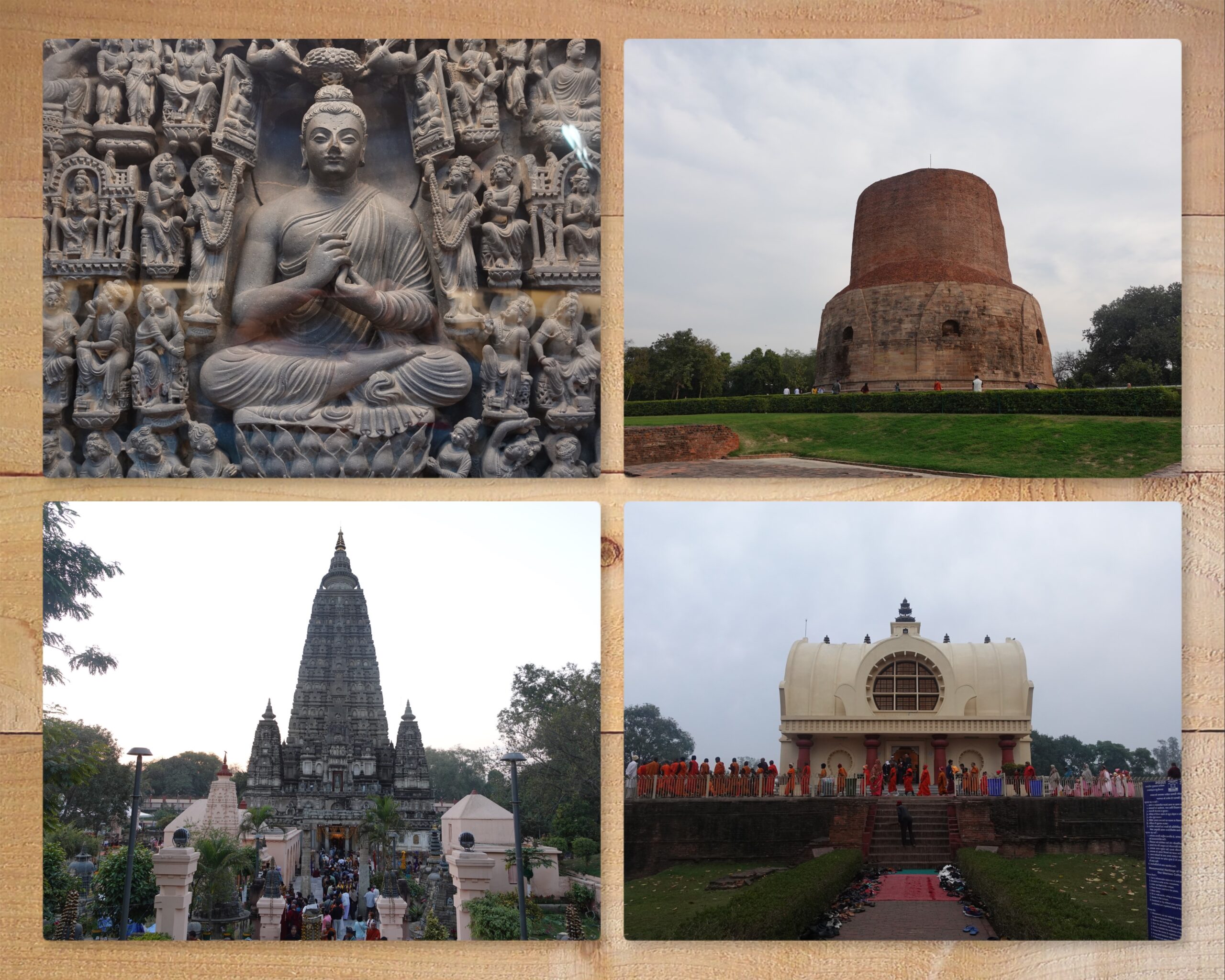Table of Contents
- 1 The Life of Buddha (Shakyamuni Buddha) as Seen from Buddhist Courses and Local Photographs] Article List - Please use this list as a table of contents.
- 1.1 Birth of Prince Siddhartha in Lumbini, Nepal!
- 1.2 Buddha's childhood in Kapilavastu, the capital of the Shaka nation
- 1.3 Buddha's Youth in Kapilavastu and the Four Gates of Departure
- 1.4 Visit Kapilavastu, the palace of the Shaka tribe
- 1.5 Significance of Buddha's marriage and the birth of his son Rahula
- 1.6 How was Buddha ordained?
- 1.7 A fateful encounter with King Bimbisara
- 1.8 Buddha's six years of ascetic practice
- 1.9 Buddha, who renounced severe suffering and was restored by Sujata's milk gruel.
- 1.10 Buddha renounces suffering and finally attains enlightenment
- 1.11 Buddha's Meditation Days and Brahma's Invocations
- 1.12 First Turning of the Dharma Wheel at Sarnath
- 1.13 The Four Sacred Truths: The Four Fundamental Truths of Buddhism
- 1.14 Historical background of India, where Buddhism was born - History and worldview of the ancient Indian religion of Brahmanism.
- 1.15 Why did Buddhism spread so rapidly in India?
- 1.16 What is Shramana - Buddha's friends and rivals, the free thinkers.
- 1.17 Buddha's powerful rival "Rokushi Gedo"
- 1.18 What was innovative about Buddha's teachings?
- 1.19 Rapid expansion of the Buddhist Order-outstanding disciples joined Buddha one after another
- 1.20 Reunion with King Bimbisara of Magadha - one after another, kings of major powers expressed their support for Buddha!
- 1.21 Endowment of Gionsyouja by Sudatta - Support of a Buddhist Order by a Major Merchant
- 1.22 Buddha makes a triumphant return to his birthplace! Mass ordination of the Buddha's family, including his son Rahula!
- 1.23 Scandal in the Order of Buddha!?Buddha's Response to Malicious Slander
- 1.24 Buddha's immolation at Kushinagara
- 1.25 A very brief commentary on the history of Buddhism after the Buddha's death
- 2 Conclusion
The Life of Buddha (Shakyamuni Buddha) as Seen from Buddhist Courses and Local Photographs] Article List - Please use this list as a table of contents.
I traveled to Buddhist sites in India from February to March 2024. This series of articles [Buddhist Lectures: The Life of Buddha (Shakyamuni) as Seen from Local Photographs] is written on the basis of that trip.
The photos presented in this series are basically those I have taken in the field.
When you visit the place where the Buddha actually lived, you will feel something different from the world you have known only from books and photographs. In this series of articles, we will continue to talk about our unique experiences in the area.
I would also like to emphasize that this series of articles is unique in that it focuses not only on Buddha's life but also on the historical background of the time.
Religion is not just religion."
This is a perspective I value in my study of Buddhism.
This series of articles will give you a sense not only of Buddha's life, but also of the atmosphere of Indian society at that time. This will surely be an exciting experience for you. It will be full of unexpected discoveries and will introduce you to a world different from the one we Japanese imagine India to be.
An introduction to Buddhism may give the impression of being stiff and difficult to read, but we have written this series of articles so that even those who do not know Buddhism can enjoy it as a "one-size-fits-all" reading material. I am sure you will think, "Wow! I see! I am sure that even those who are not familiar with Buddhism will enjoy reading this series of articles.
Although "learning about religion and Buddhism" may sound pretentious, I hope that you will take it easy and experience the life of the great Buddha.
Also, the main direct reference in this series was,
Hazime NakamuraGautama Buddha.
Translated by Yuichi Kajiyama, Nobuhiko Kobayashi, Musashi Tachikawa, Katsumi MimakiThe Complete Translation of Buddhacharita
Akira HirakawaThe Life of Buddha: A Reading of the Praises of the Buddha's Practice.
This will be a reference book called
There are also other Buddhist books and books about India that we have featured on our blog, so please take a look at these as well.
So let's get started.
Birth of Prince Siddhartha in Lumbini, Nepal!
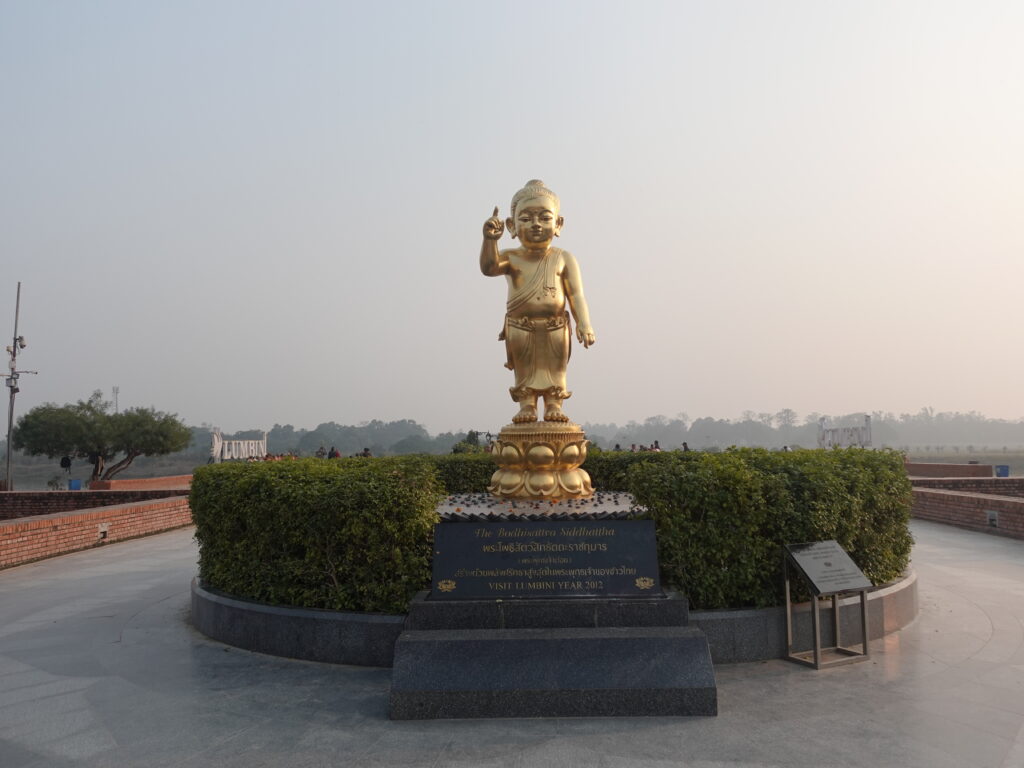
In this first article, I will begin with a very cursory description of the person of Buddha, and from there I will discuss his birth in Lumbini, Nepal.
Buddha's childhood in Kapilavastu, the capital of the Shaka nation
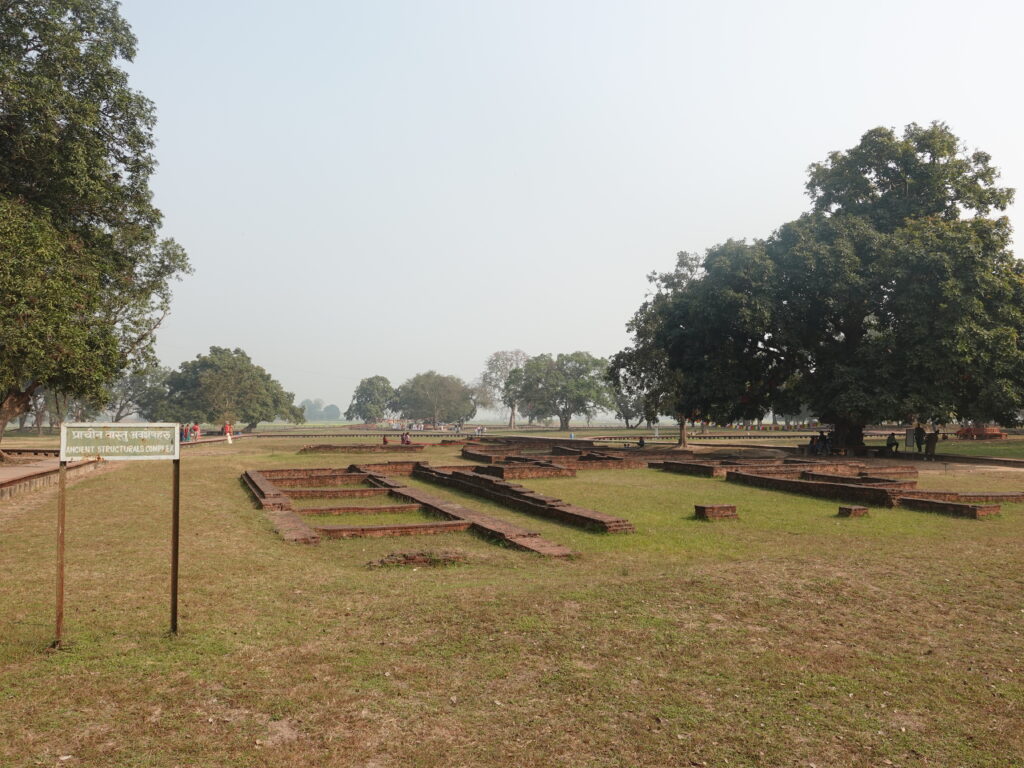
Buddha, born in Lumbini, would soon return to the royal city of Kapilavastu.
But here was a tragedy that no one could have predicted. Queen Maya died suddenly seven days after giving birth to Buddha.
This article looks at what Buddha's childhood was like after the loss of his mother.
Buddha's Youth in Kapilavastu and the Four Gates of Departure
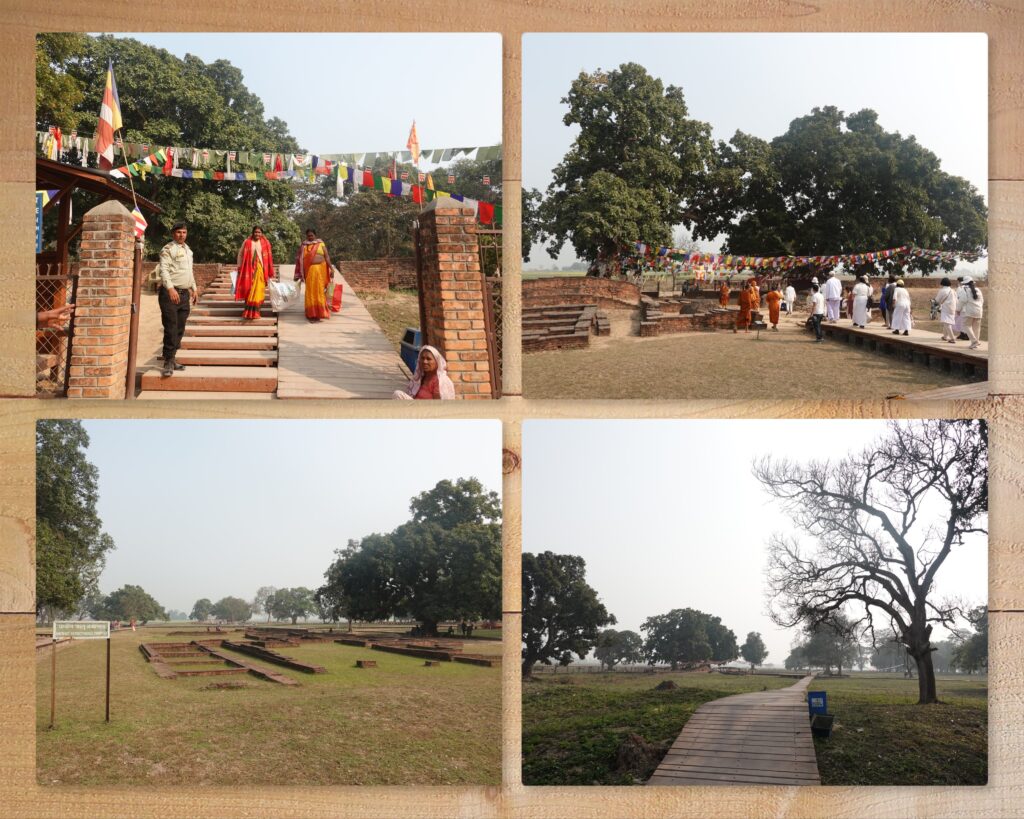
In this article, I will discuss Buddha's youth, a time when he grew up without any problems but with a lot of worries.
This article will also discuss the "Shimon Syutuyu" that inspired Buddha to become ordained, and the royal palace in Kapilavastu where he lived.
Visit Kapilavastu, the palace of the Shaka tribe
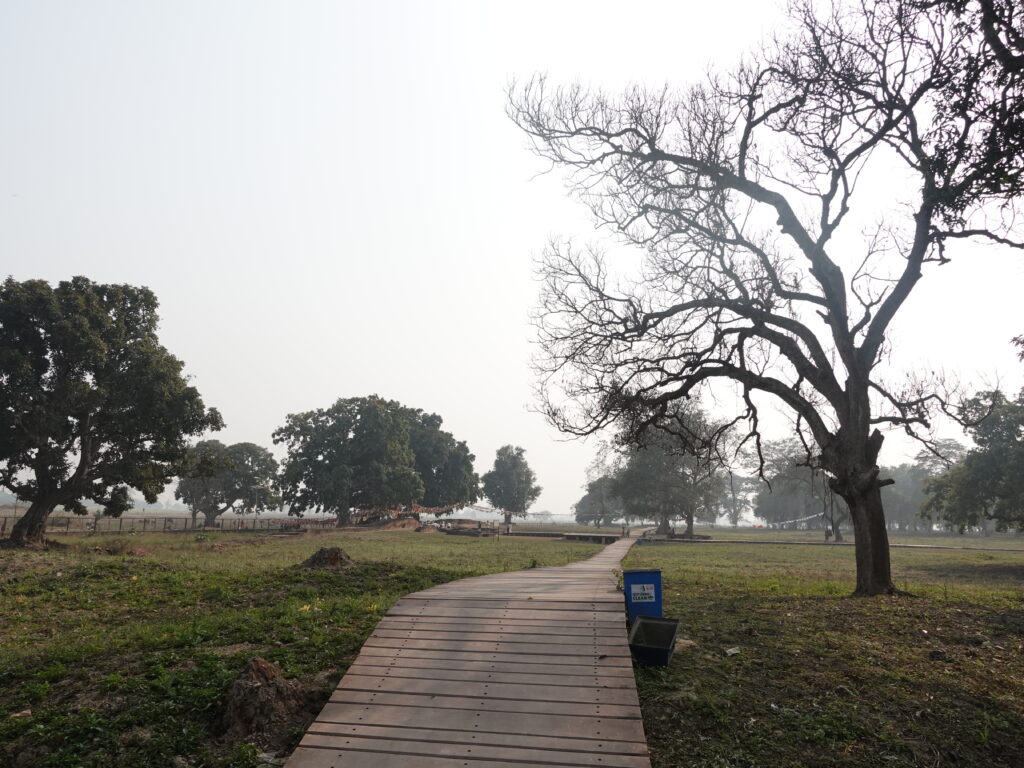
Buddha spent his young days in Kapilavastu, the capital of the Shaka tribe. In this article, I would like to share my impressions of Buddha's life in Kapilavastu, the capital of the Shaka tribe. I was able to see Buddha's image only because I actually saw him there.
Significance of Buddha's marriage and the birth of his son Rahula

A young Buddha living a depressing life in Kapilavastu.
Buddha also decided to take a wife. The child born was named Rahula. However, it is often said that the name "Rahula" means "obstacle" in Indian language. It is said that the name was given to the child because the Buddha felt that the child was a hindrance to his renunciation of his home and ordination. I too had my doubts when I heard about these episodes of Buddha's life.
However, when I looked into it, I was surprised to learn that it has a completely different meaning. In this article, I will discuss this different theory of Rahula.
How was Buddha ordained?
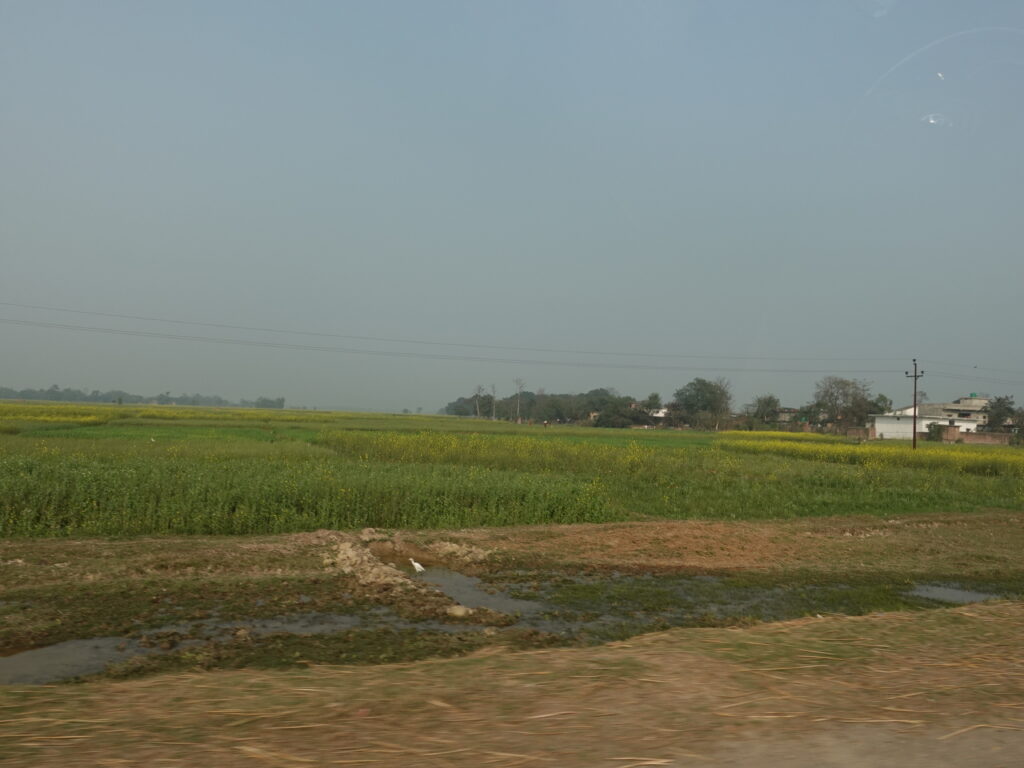
After spending many depressing days, Buddha finally sets out on his journey with great ambition. However, it was extremely difficult for Buddha, who lived in the royal palace, to escape from there without anyone knowing about it. He turned to his horseman Channa and his beloved horse Kantaka. This article will tell the story of Buddha's departure from the palace.
A fateful encounter with King Bimbisara
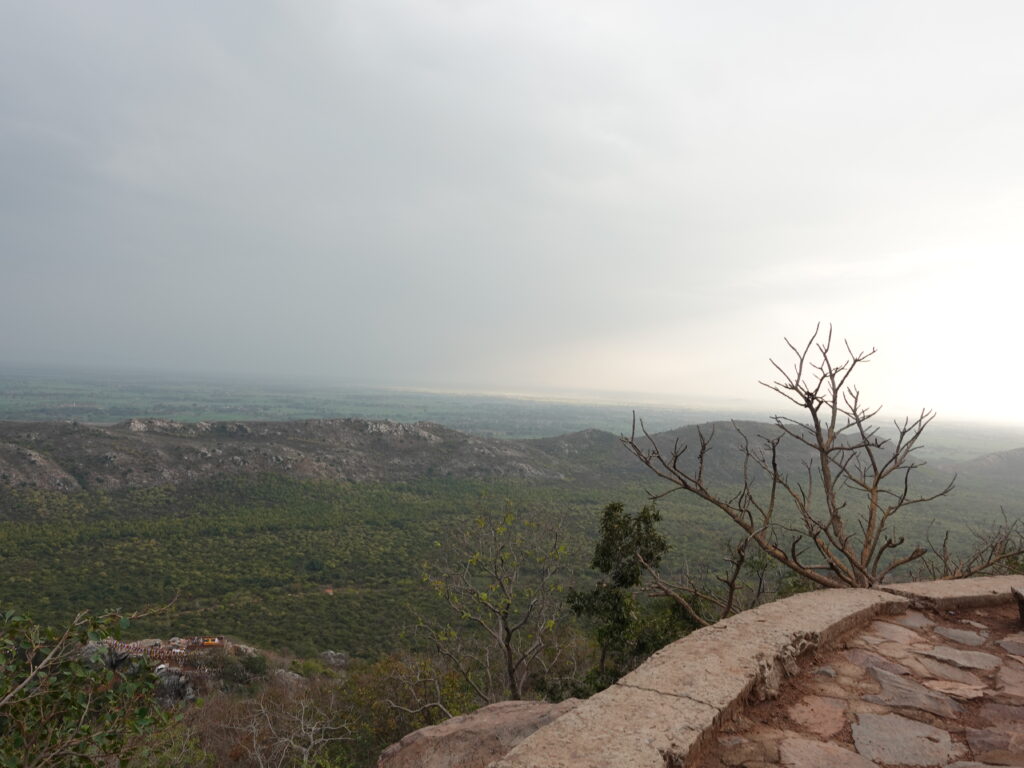
- 1 Buddha, ordained, goes to Magadha country and begins a life of asceticism
- 2 Bimbisara, King of Magadha and Buddha
- 3 King Bimbisara meeting with Buddha
In this article we will talk about Buddha, who has finally entered into a life of asceticism.
The first place Buddha went to was Rajigir of Magadha. Magadha was one of the most powerful countries in India at that time, and its capital, Rajigir, was also a cutting-edge city in terms of economy and culture, and a gathering place for many religious leaders and thinkers.
Here Buddha will have a certain fateful encounter. This article will also discuss such an encounter between Buddha and King Bimbisara.
Buddha's six years of ascetic practice
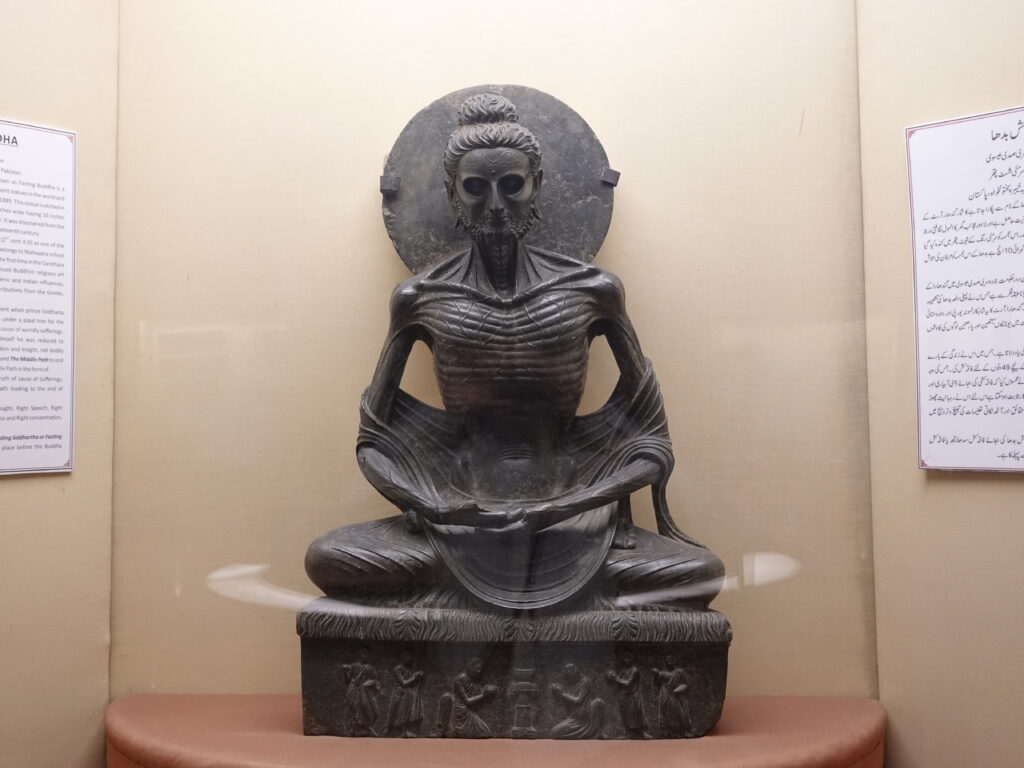
- 1 The first teacher, Arara Kalama
- 2 The Second Guru Uddaka Ramaputta
- 3 Buddha's life of suffering
- 4 The Fasting Buddha of Gandhara, a supreme treasure in the collection of the Lahore Art Museum, Pakistan
The Buddha came all the way to Magadha to learn from the best meditation practitioners of his time.
In this article, I will first discuss the process of Buddha's meditation transmission, and then I will talk about Buddha's life of severe asceticism.
In the second half of the article, I will also discuss the fasting Buddha image pictured above, which is in the collection of the Lahore Art Museum in Pakistan. The Buddha image I saw there was far more shocking than I had imagined.
Buddha, who renounced severe suffering and was restored by Sujata's milk gruel.
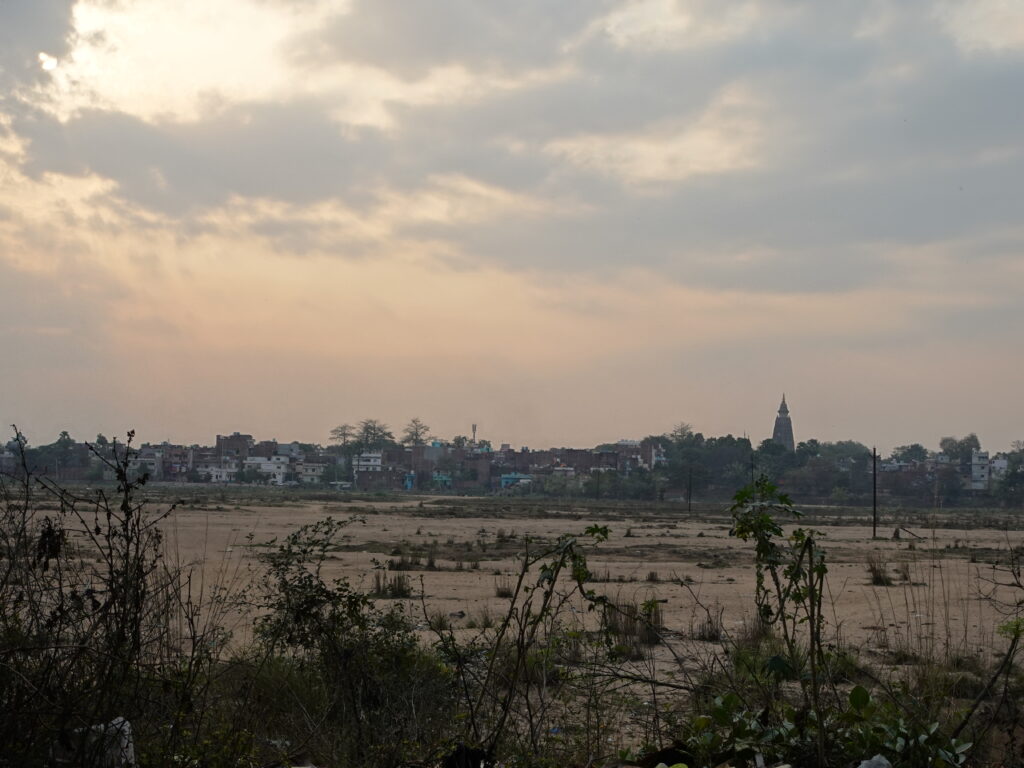
In the previous article, we talked about the Buddha's six years of severe asceticism, and now the day of his attaining enlightenment has arrived. In this article, we will talk about the Buddha just before his attainment of enlightenment.
Sujata, the famous soup company, is also based on this episode.
Buddha renounces suffering and finally attains enlightenment
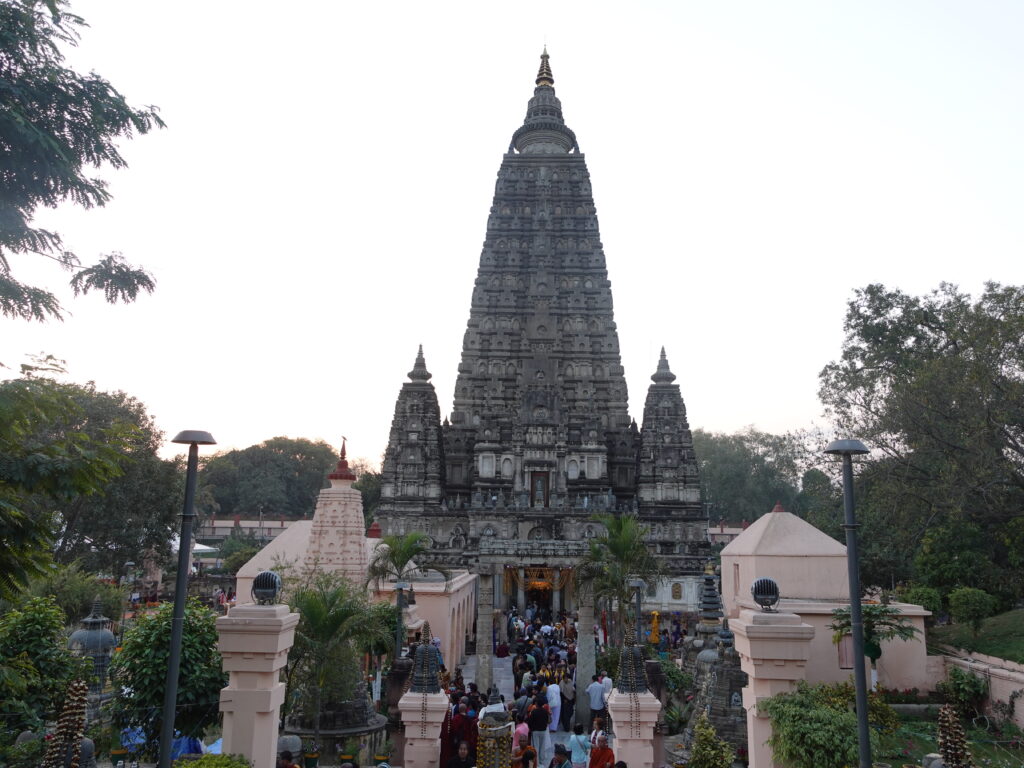
After six years of severe asceticism, the day of Buddha's attainment of enlightenment finally arrives. In this article, we will talk about how Buddha attained enlightenment.
We will also introduce famous episodes in the Buddha biography, such as Sujata's anecdote about giving Buddha milk porridge and the confrontation between Buddha and the devil.
Buddha's Meditation Days and Brahma's Invocations
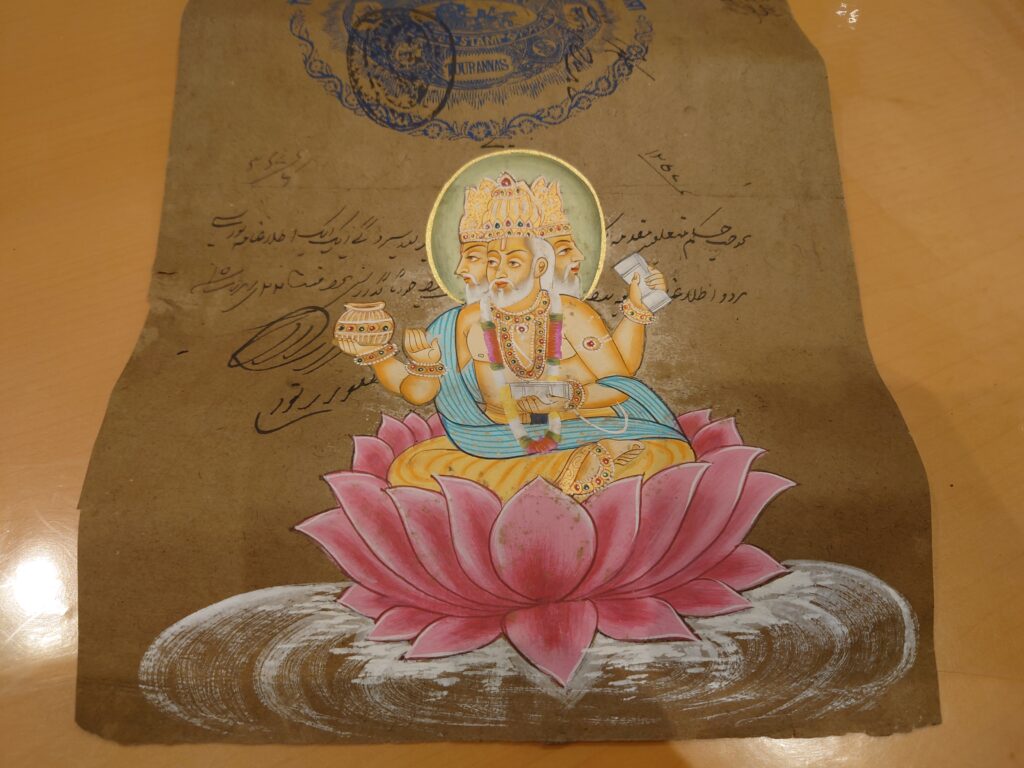
- 1 Buddha enjoying the state of enlightenment
- 2 Protection of the Dragon King Muchalinda
- 3 Birth of the first lay believers
- 4 Brahma's request - Buddha's hesitation to preach
Buddha finally attained enlightenment under the Bodhi tree in Bodhgaya.
After seven days, he got up and moved to the Ajapala tree, where he remained sitting for seven days. After seven days, he got up and moved to the Ajapala tree, where he remained seated for seven days.
Thus, Buddha would change his seat every seven days for a total of 49 days of immersion in meditation, during which time a variety of events occurred.
The most significant of these episodes is the Brahmanic invocation. Brahman, the supreme deity of India, visited Buddha who was hesitant to preach to the people.
First Turning of the Dharma Wheel at Sarnath
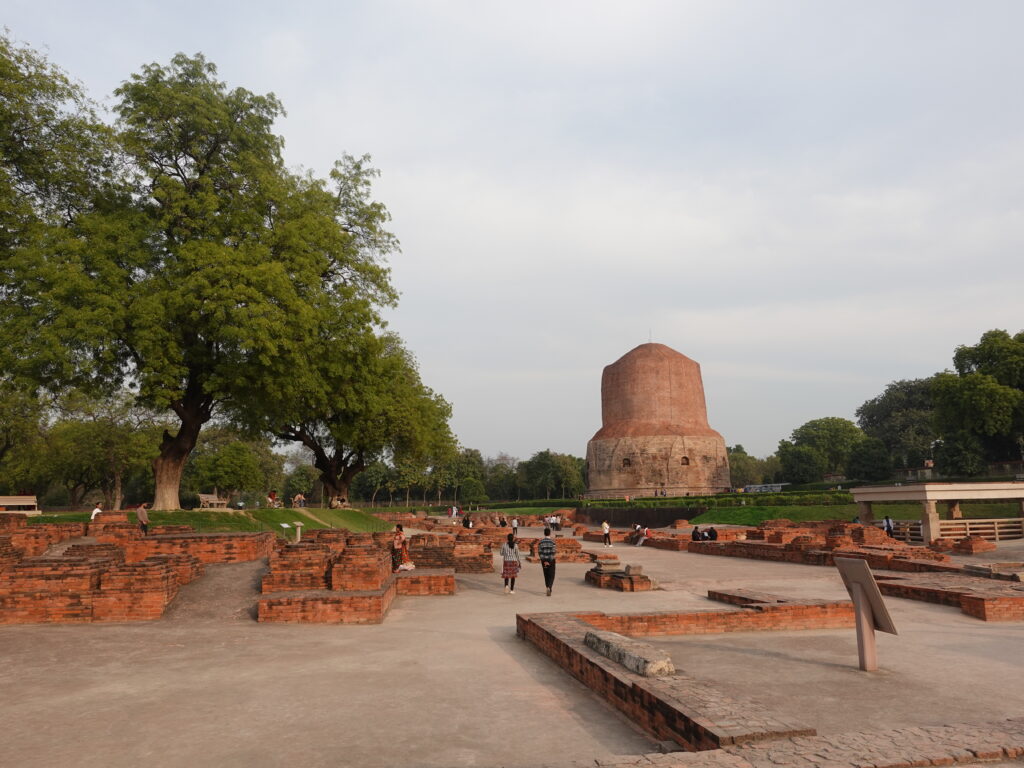
- 1 Rise up from meditation and step onto the path of preaching
- 2 Buddha's first Dharma wheel at Sarnath
In the previous article, I told you about Buddha's hesitation to preach to the people immediately after his enlightenment.
However, Brahman, the supreme deity of India, finally persuaded him to preach to the people.
In this article, I will talk about that first Buddha sermon. It is from this very sermon that the history of the Buddhist Order began.
The Four Sacred Truths: The Four Fundamental Truths of Buddhism
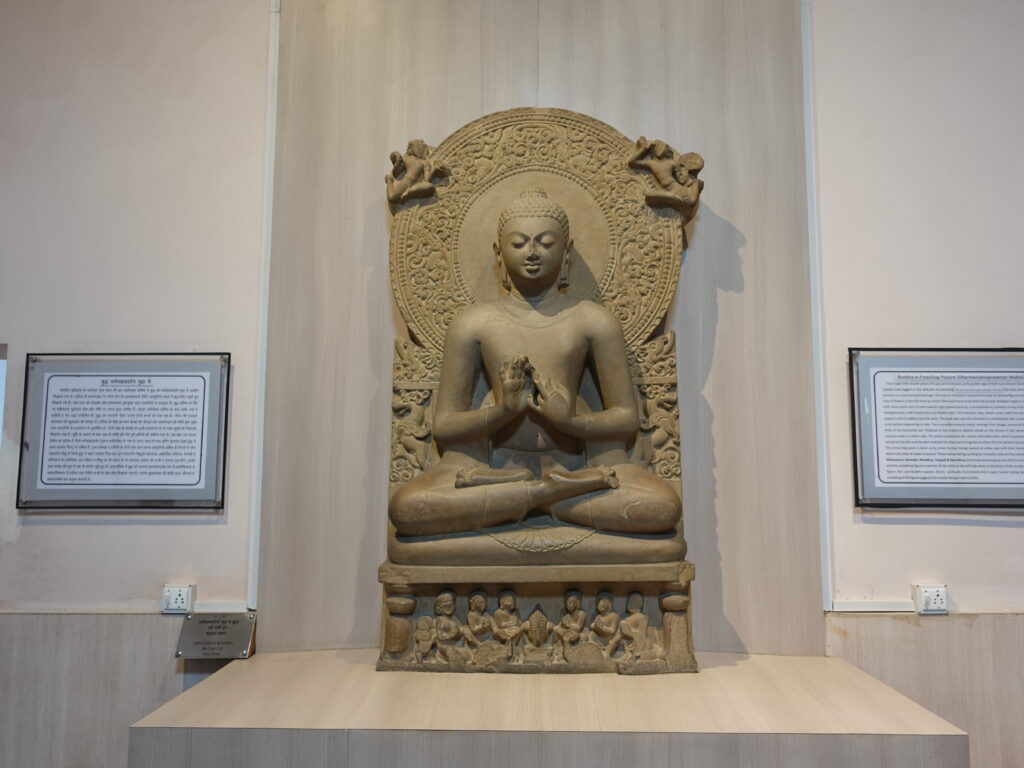
- 1 Four truths taught by Buddha
- 2. Kutai - All sufferings are suffering. This world is a world of suffering.
- 3 Zittai - Know that the cause of suffering is vexation.
- 4.. "Mettai" - to attain enlightenment by renouncing vexations, leaving the world of suffering behind.
- 5 Dotai - Eight correct practices for the destruction of vexations
Buddha finally began to preach at the First Turning, and five of his fellow practitioners took refuge in him. It is said that this first turning of the wheel marked the beginning of the Buddhist Order.
And in this article, I will tell you very briefly what the Buddha taught in that first Dharma wheel.
Historical background of India, where Buddhism was born - History and worldview of the ancient Indian religion of Brahmanism.
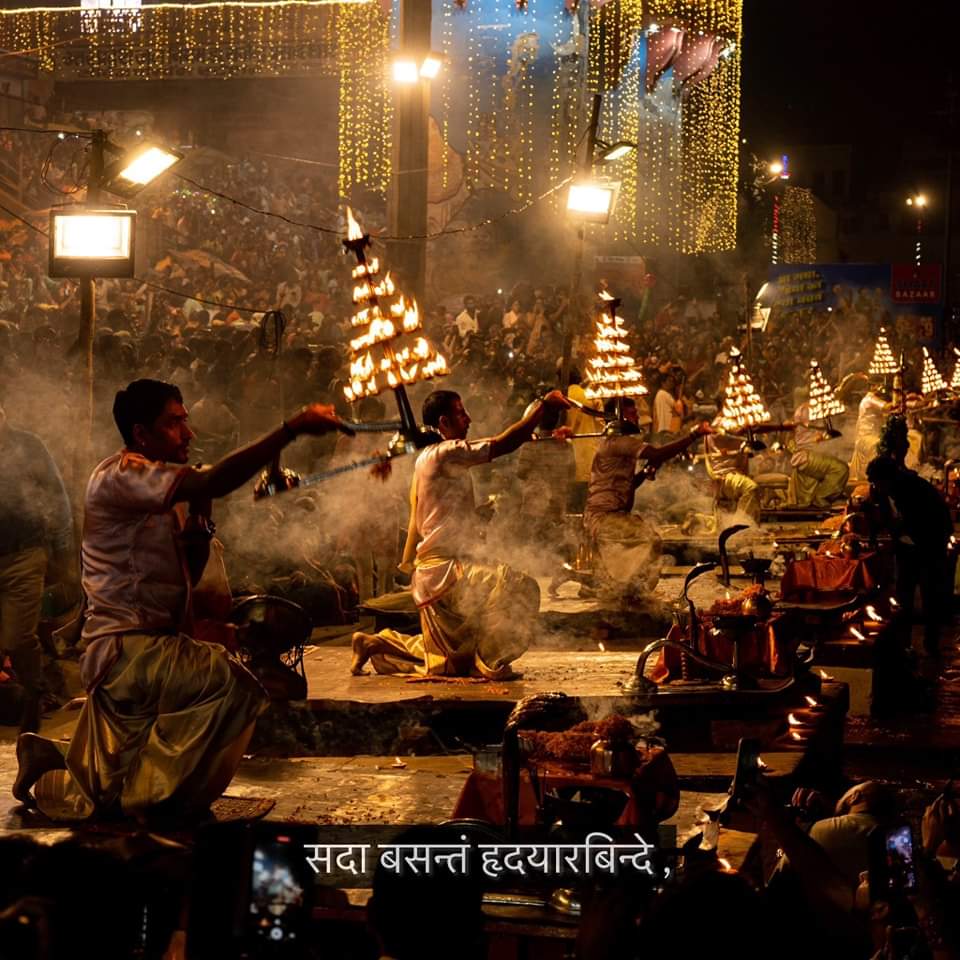
- 1 End of Indus Civilization and Aryan Invasion
- 2 Aryans and Brahmins - Vedic beliefs and caste system
- 3 Upanishat Philosophy and Brahman
- 4 Conclusion
From this point on, I would like to take a break from the life of the Buddha and talk about the historical background of India. If you know the historical background, you will understand how unique Buddha's teachings were. Although this is a large scale story of Indian history, I will try to keep it as brief as possible, so I hope you will bear with me.
Why did Buddhism spread so rapidly in India?
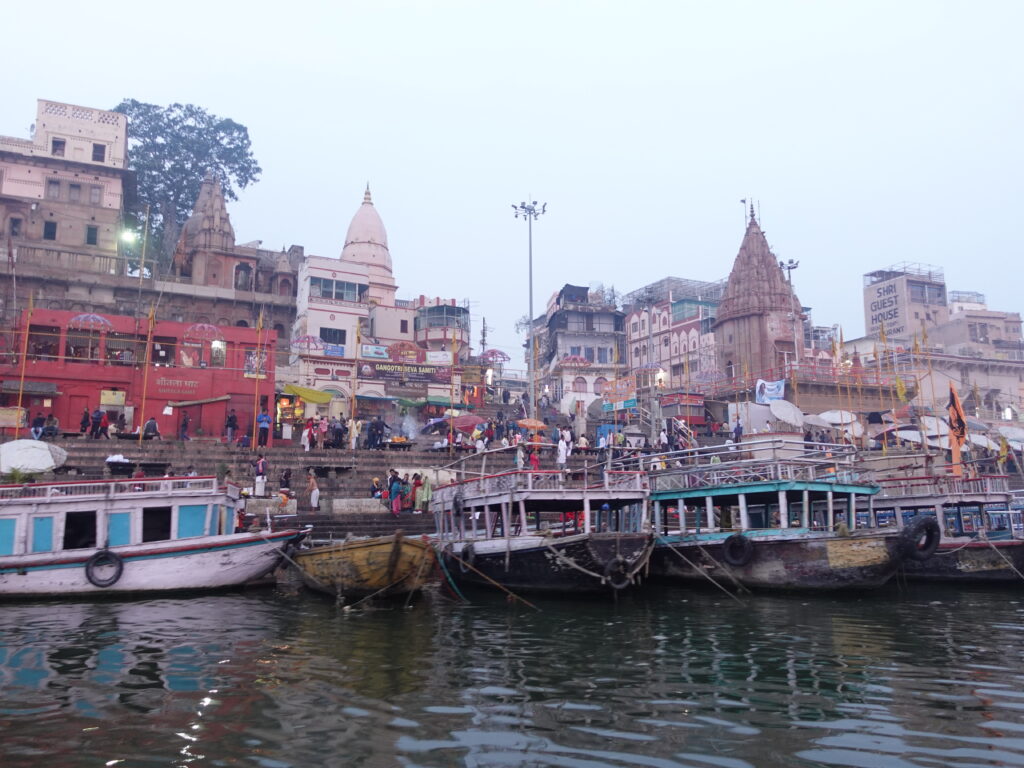
- 1 Domestic conditions in India around the 5th century B.C., when the Buddha was born.
- 2 Use of Ironware and Emergence of Great Powers
- 3 Development of a Monetary Economy and Emergence of New Merchants
- 4 Conclusion
In this article, we will finally discuss the historical background of the India in which the Buddha lived.
In fact, the period in which Buddha was active in India was one of the most turbulent in Indian history, and it could be said that it was precisely because the times demanded him. No matter how great a charismatic figure he may be, he cannot exist if he ignores the times. Political economy, culture, international situation, and many other factors of the time all come into play, and new teachings are accepted by the people.
What I will discuss in this article is very important to feel that dynamism.
What is Shramana - Buddha's friends and rivals, the free thinkers.
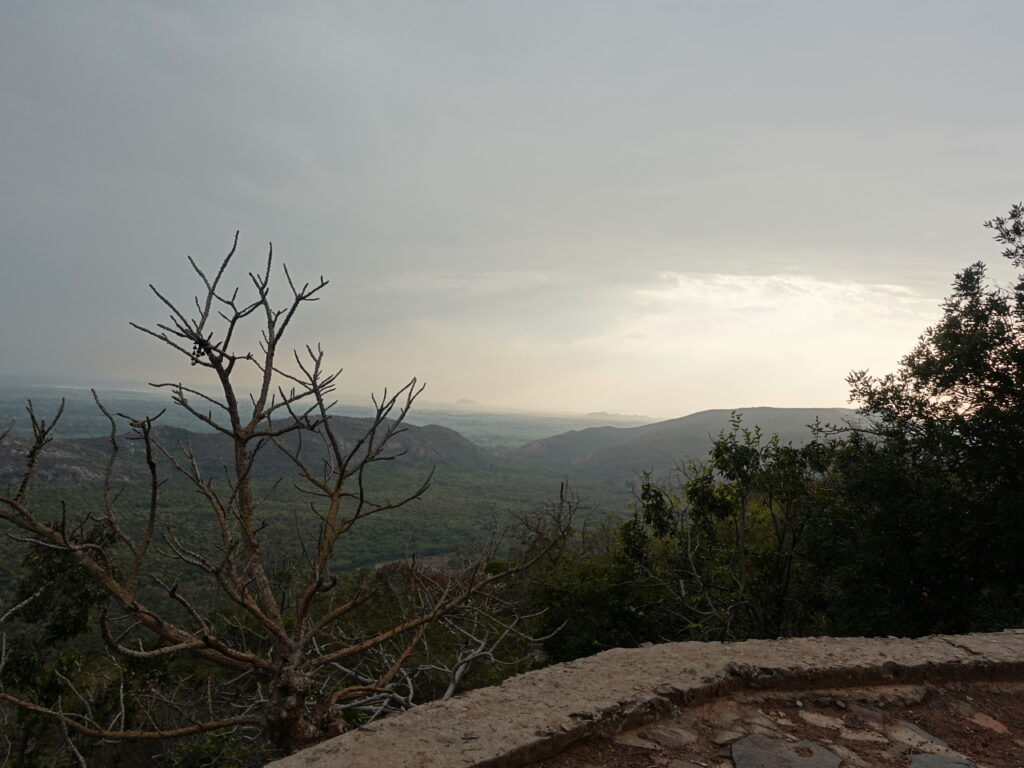
In this article, I will briefly discuss Buddha's rivals, the samon (faith thinkers), but don't worry, I won't get into the difficult ideological stuff.
But knowing even roughly what they were talking about is important for understanding the uniqueness of the Buddha. After all, there are things that can only be understood by comparing them.
Buddha's powerful rival "Rokushi Gedo"
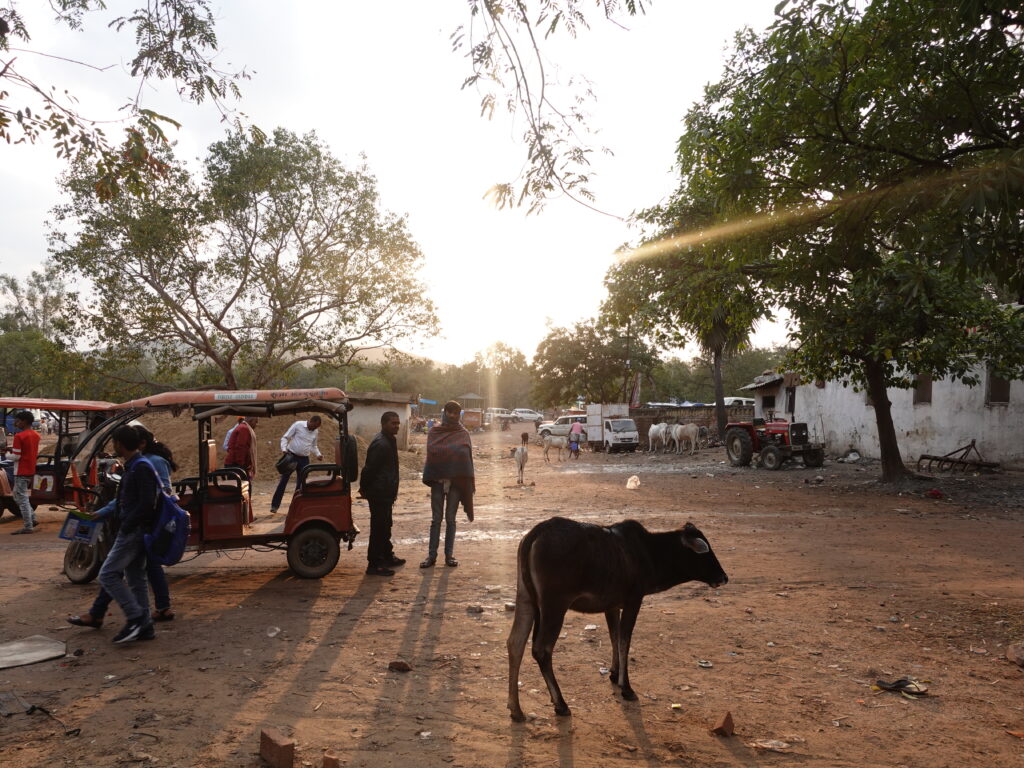
- 1 Poulana's theory of moral negation
- 2 The Seven Elements Theory of Pacuda
- 3 Gauthara's fatalism (determinism)
- 4 Azita's materialism
- 5 Sanjaya's Skepticism
- 6 Niganta Nathaputta (Mahavira), founder of Jainism
- 7 Conclusion
In this article, we will talk about the "RokusiGedo," six thinkers who became powerful rivals of the Buddha. The word "Gedo" may not have a favorable image in Japan, but here it simply means "teachings outside of Buddhism.
Rokushi Gedo refers to a particularly influential thinker among the "Shamon" group of emerging thinkers who rejected the Brahminical worldview of the time. I have already discussed the "Shamon" and the historical background of the time in a previous article, so I will skip this topic, but it is very important to know the thought of the Six Masters in order to understand the Buddha's thought. By comparing with them, we can see Buddha's uniqueness.
The purpose of this series of articles is to provide an introduction to Buddhism by taking a brief look at the life of the Buddha. Therefore, there is no need to memorize the names of the thinkers listed here and their philosophical content. It is sufficient if you can get a sense that these people were around at the same time as the Buddha. Please feel free to follow along with us.
What was innovative about Buddha's teachings?
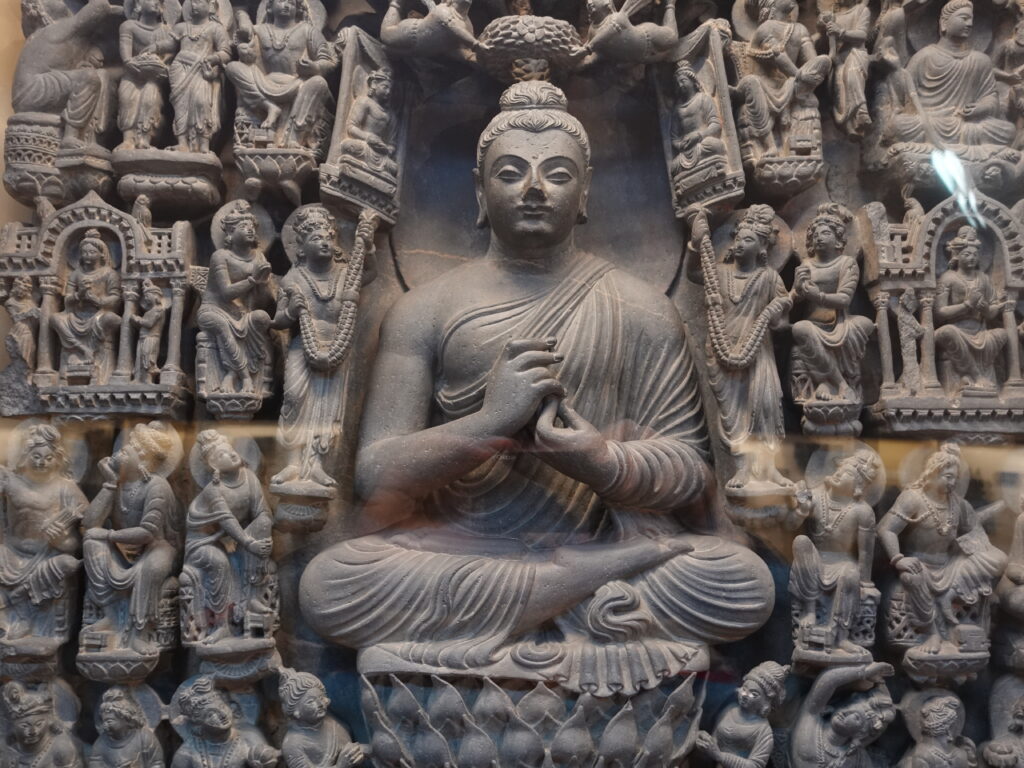
- 1 Criticism of Brahminism's ritual supremacy and the theory of self-inflicted death
- 2 Criticism of the Brahmin caste system
- 3 Brahmanism's denial of the Atman (Self)
- 4 Buddha's "no note" over Sanjaya's skepticism
- 5 Buddha clarified the causes of life's suffering and the path to salvation
- 6 Conclusion
In this article, I will finally discuss what was innovative about Buddha's teachings in the context of the religious situation in India.
Buddha first preached his teachings at the First Turning in Sarnath. The five companions who heard his teachings were instantly enlightened. To us moderns, the teachings of the Four Noble Truths are so simple that we may wonder if we can really be enlightened by them.
We will look again here at what makes Buddha's teachings different from conventional thought and what teachings opened the eyes of the five companions.
Rapid expansion of the Buddhist Order-outstanding disciples joined Buddha one after another
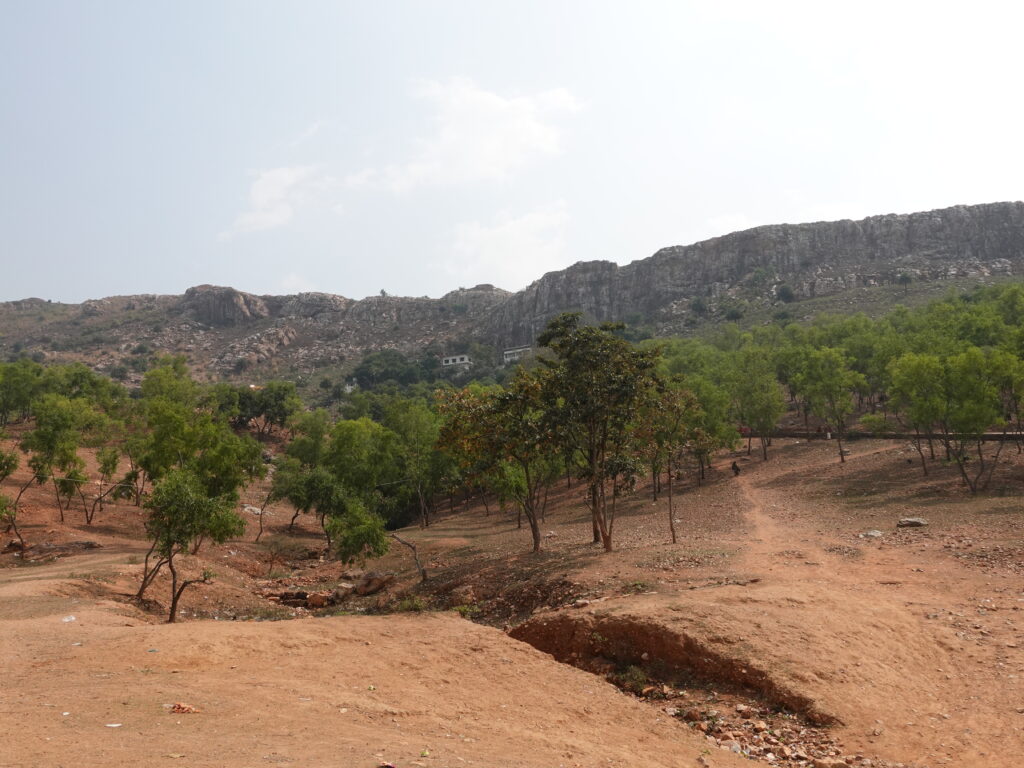
- 1 Ordained by Yasa, son of a great merchant (chief) and his associates
- 2 The devotion of the three Kassapas - three powerful Brahmin brothers of the time, all together in the Order of Buddha.
- 3 Conversion of Sāriputta and Moggallāna , disciples of Sanjaya of the RokusiGedo
- 4 Conclusion
From this article we will return to the life of Buddha. From here we will be in the latter half of Buddha's life. Now that we have grasped the historical background of India and the innovations of his teachings, it will be very exciting to see his rapid progress.
The Buddhist Order was born with the first turning of the wheel in Sarnath, and from this point on, it quickly and rapidly expanded. In this article, I will discuss the entry of talented disciples who were a major factor in the rapid expansion of the Order of Buddha.
Reunion with King Bimbisara of Magadha - one after another, kings of major powers expressed their support for Buddha!
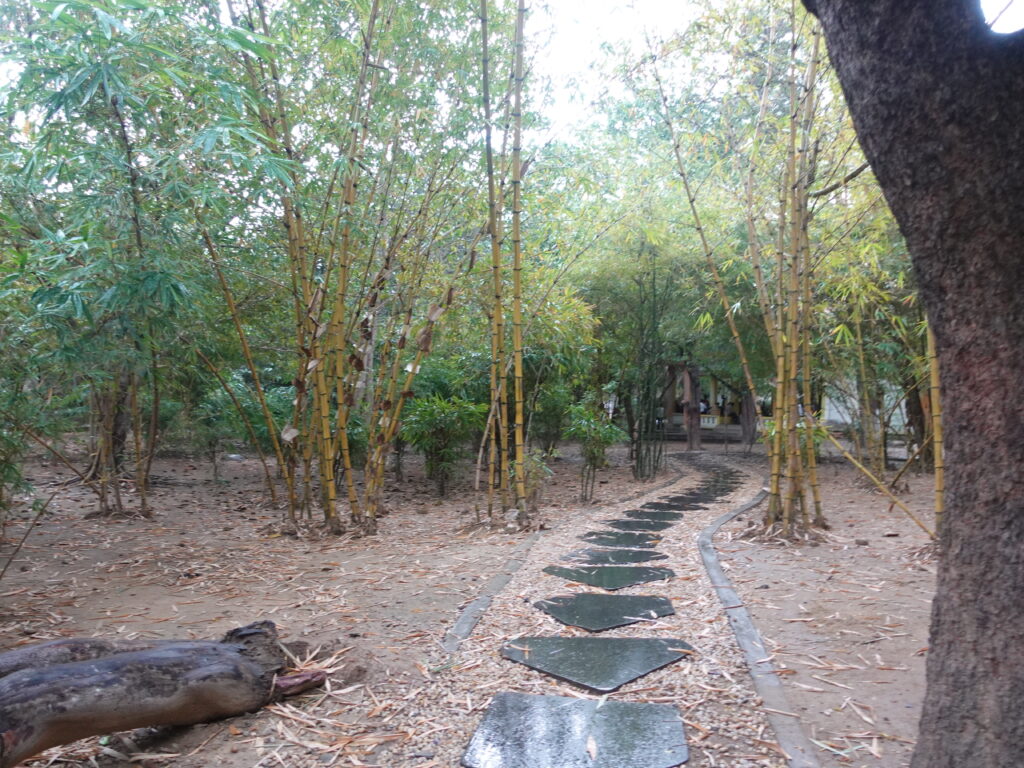
- 1 Reunion with King Bimbisara of Magadha
- 2 Influence of King Bimbisara's devotion
- 3 Kings expressing their support one after another
This article will look at another aspect of the expansion of the Buddha Order apart from the "joining of the disciples". The moment when the Buddha Order finally became a huge force will be discussed in this article. This reunion with King Bimbisara marks a further development for the Buddha Order.
Endowment of Gionsyouja by Sudatta - Support of a Buddhist Order by a Major Merchant
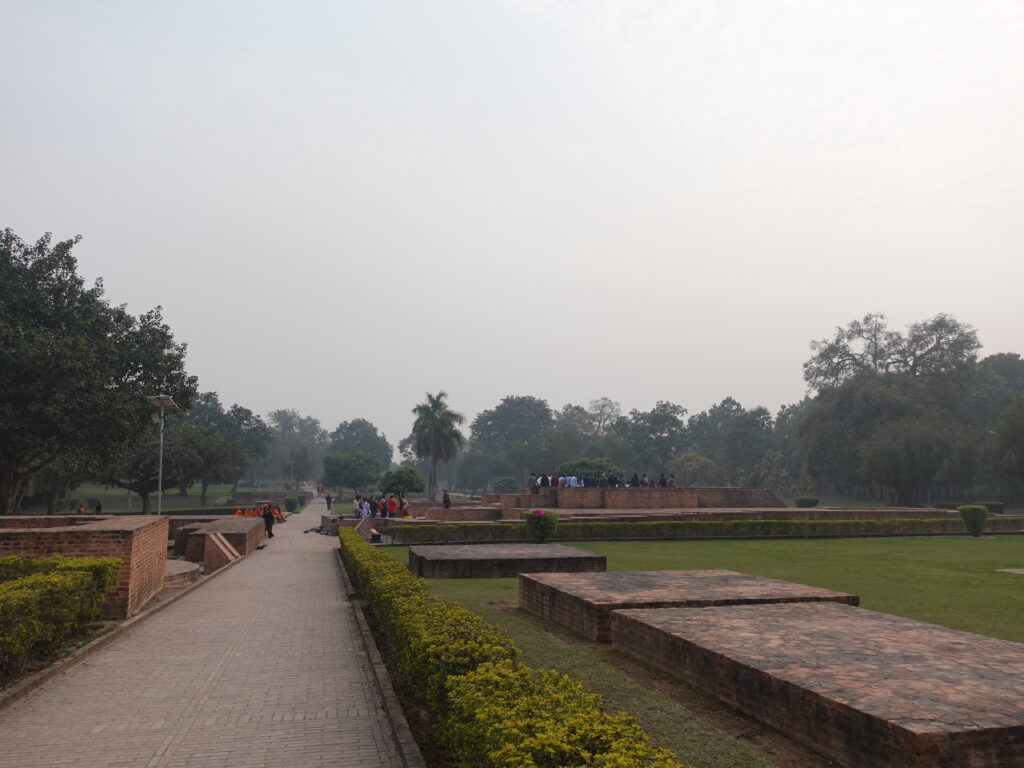
The main character in this article is a great merchant named Sudatta. He became famous for donating the Gion Syouja to Buddha, and the phrase "The sound of the bell of the Gion Syouja.." comes from this Gion Syouja.
As I mentioned in the previous article, Buddha was visiting the country of Magadha as the head of a large cult. And with the donation of King Bimbisara, Buddha's cult stayed for a while in Rajigir, the capital of Magadha.
At that time, a merchant heard a rumor of Buddha's sojourn and came to visit him. It was Sudatta.
His presence has had a tremendous impact on the Order of Budda. This article looks at such a great merchant and the Buddha Order.
Buddha makes a triumphant return to his birthplace! Mass ordination of the Buddha's family, including his son Rahula!
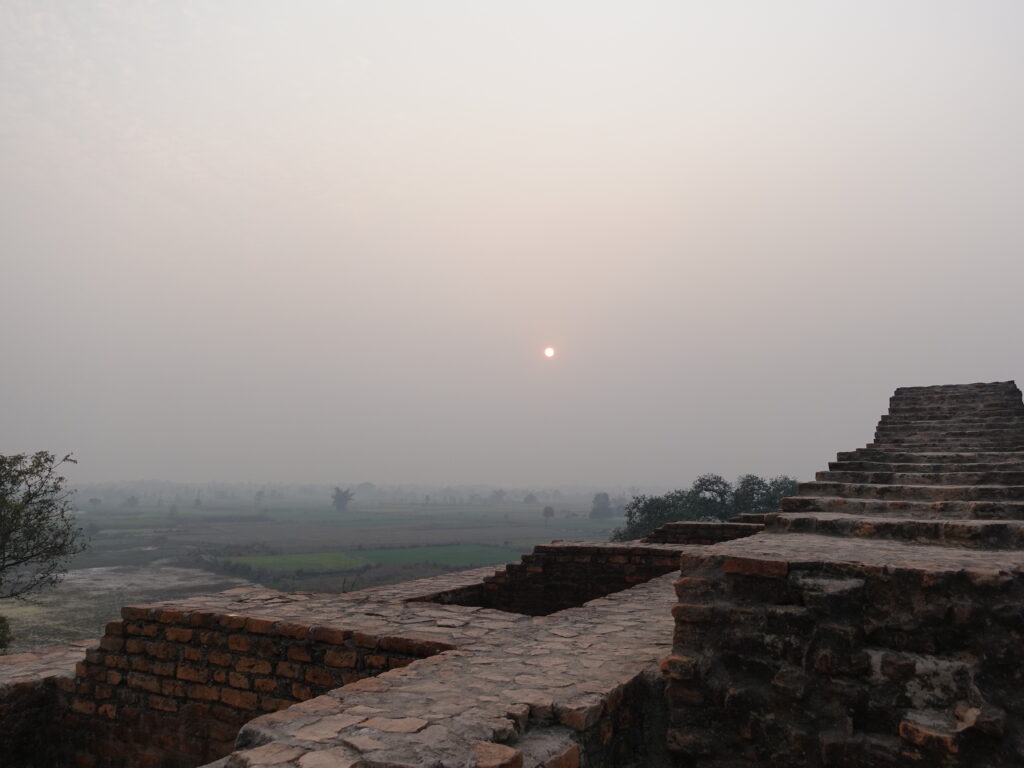
- 1 Buddha, to his hometown Kapilavastu
- 2 Mass ordination of Shakas, including his son Rahula and cousin Ananda
- 3 Buddha ascends to heaven to meet his mother
With the addition of capable disciples and the support of great kings and great merchants, the Order of Buddha has emerged as a truly great cult.
The chief, Buddha, is finally returning to his birthplace. In this article, we will talk about how that happened. How was Buddha welcomed by the people of his hometown after he abandoned his country and left it?
Scandal in the Order of Buddha!?Buddha's Response to Malicious Slander
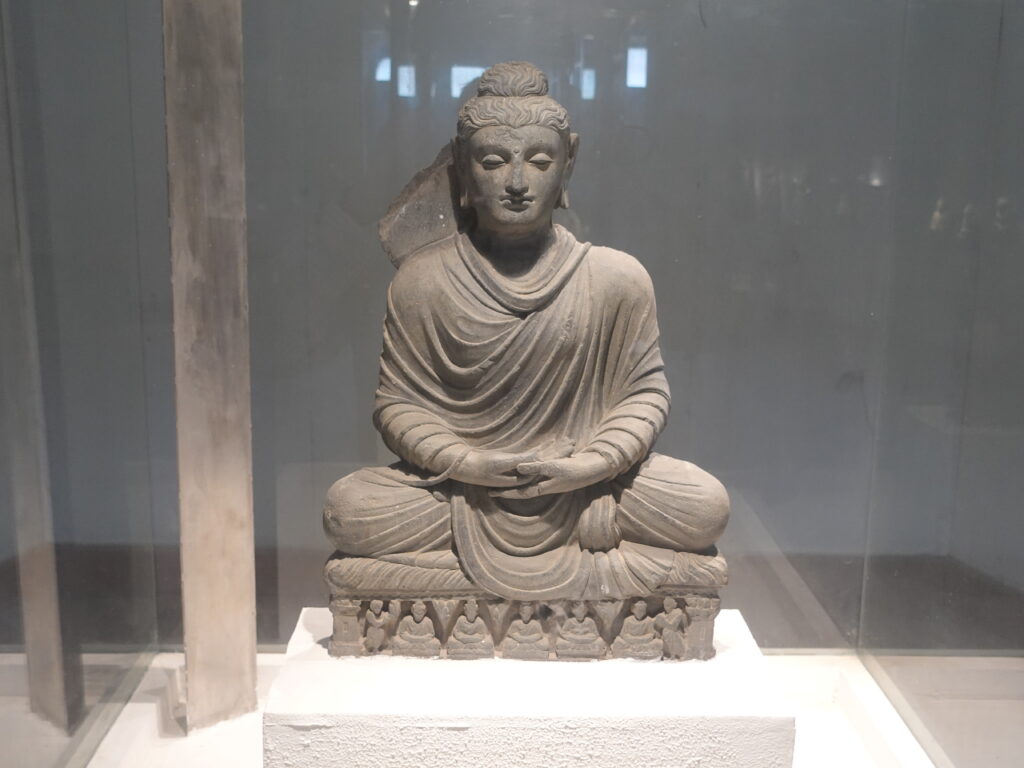
We have seen the rapid expansion of the Buddist cult in the past articles, but when it has grown so rapidly, there are bound to be people who are not happy about it.
Although it is not a very serious incident in the life of Buddha, I would like to introduce here an episode that can be of great help to those of us living today.
Buddha's immolation at Kushinagara
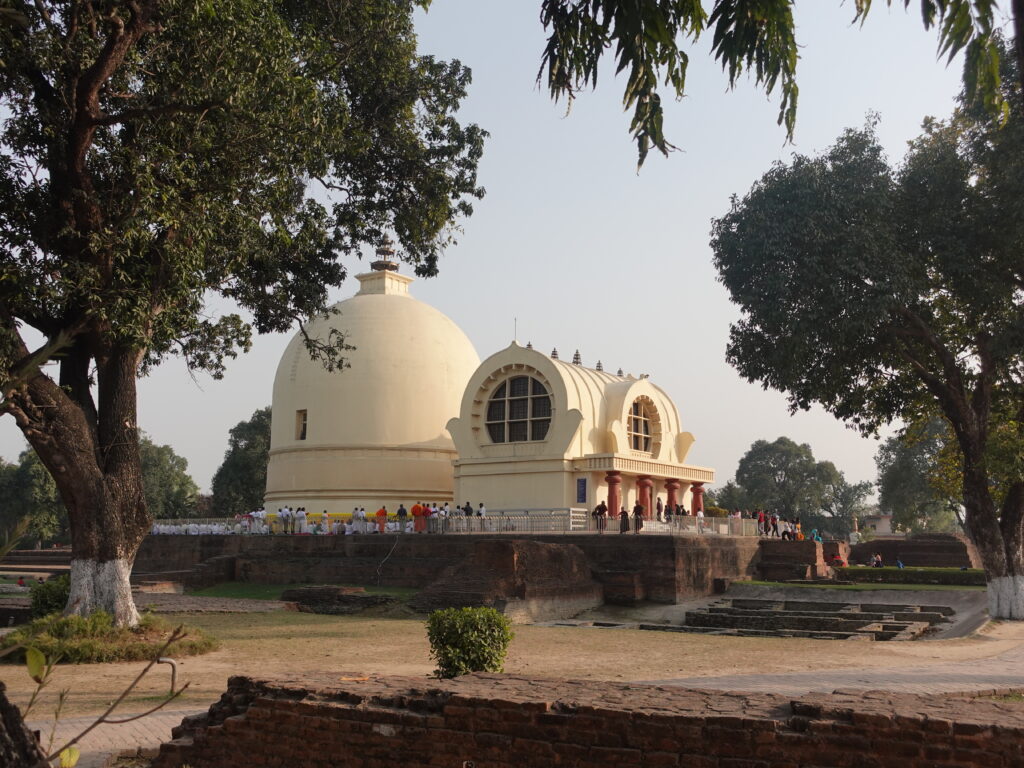
- 1 Buddha departing on his final journey from Mt.Ryouju
- 2 Buddha's Path
- 3 Budda suffering from severe stomachache from Chunda the blacksmith's mushroom dish.
- 4 Incoming and outgoing at Kushinagara
- 5 Cremation of Buddha
- 6 Conclusion
I have told you about the life of Buddha 23 times so far, and in this 24th installment, Buddha's life will finally come to an end.
At the age of 80, the Buddha set out on his final journey after completing his teachings at Mount Ryouju. Realizing that he had little time left to live, he set out for his hometown of Kapilavastu.
In this article, I will discuss Buddha's last journey and death.
A very brief commentary on the history of Buddhism after the Buddha's death
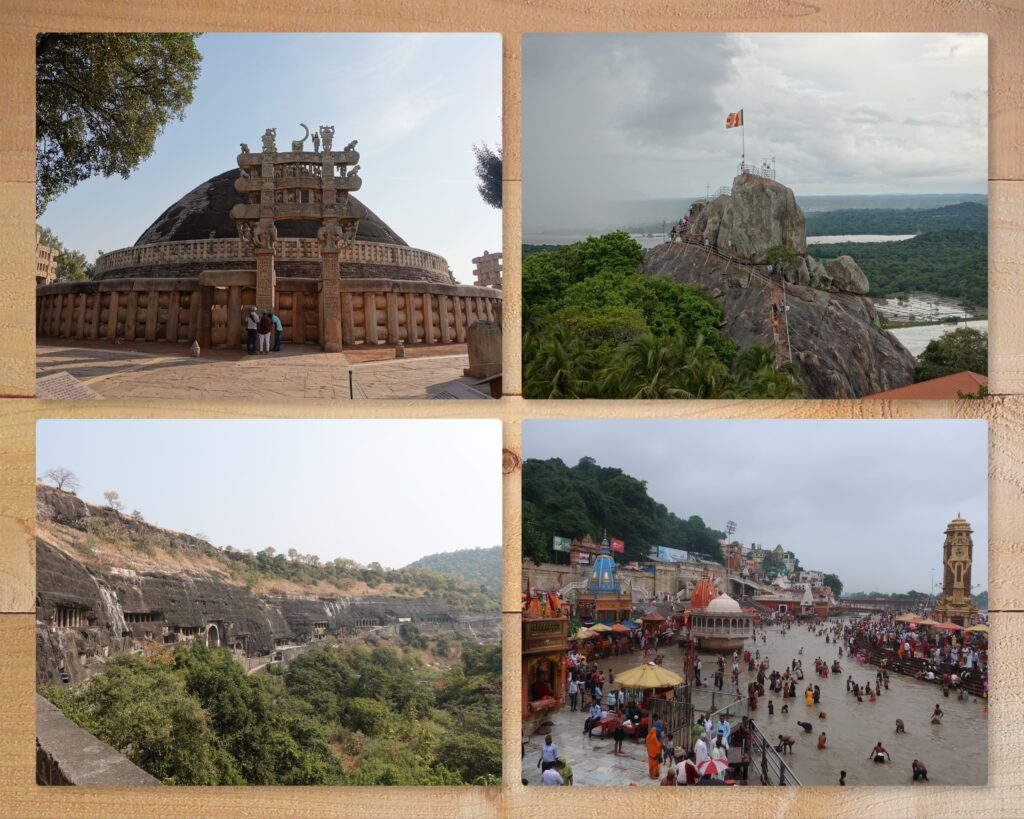
- 1 Sutra gathering after Buddha's demise
- 2 The Second Sutra Gathering that occurred about 100 years after the Buddha's demise - to the split of the Buddha's cult.
- 3 Appearance of King Ashoka
- 4 Introduction of Buddhism to Sri Lanka
- 5 Buddhist art flourished, including stupas in Saanchi
- 6 Around the end of the 1st century A.D. to the 2nd century A.D., the appearance of the Buddha image
- 7 The Birth of Mahayana Buddhism
- 8 Introduction of Buddhism to China
- 9 The heyday of Indian Buddhist art, including Ajanta, Ellora, and Sarnath
- 10 Gupta dynasty of King Chandragupta established in India - Hindu dynasty emerged and Buddhism became inferior.
- 11 The Rise of Chinese Buddhism
- 12 Introduction of Buddhism to Japan
- 13 Genjo Sanzo's Journey to India in Search of the Law
- 14 The prevalence of esoteric Buddhism in India and its spread to China. Saicho and Kukai's entry into Tang Dynasty China.
- 15 The Decline and Fall of Indian Buddhism
- Conclusion - In Reply to the Afterword
In the previous 24 articles, we have taken a general look at the life of Buddha.
In this article, I will give a very brief overview of the history of Buddhism since the Buddha's death. It would be reckless to summarize more than 2,000 years of history spanning the globe in a single page, but I will try to give you a very brief overview.
Conclusion
This is the end of "Buddhist Lectures: The Life of Buddha (Shakyamuni Buddha) as Seen in Local Photographs" with 25 articles in total.
This series of articles is only an "introduction to Buddhism," so I have hardly touched on the ideological aspects, but I am sure that reading these articles will give you an idea of Buddha's life and the times in which he lived.
If you are interested in learning more about Buddha's teachings, this book is a good introduction to the Buddha's teachings.The Birth of Buddhism.and Nakamura Hazime's translationThe Buddha's Word of Truth.I would like to recommend the following
If you are interested in learning more, the following list of recommended reference books will also be helpful. Please take a look at this list as well.
Related Articles











